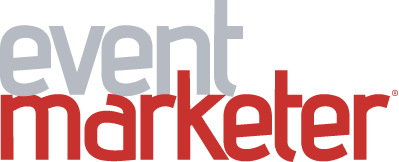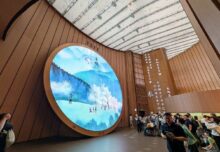The storied Ryder Cup, held in September at the Black Course of Bethpage State Park in Farmingdale, NY, was not without its headline-making moments beyond the game of golf. Widely regarded as the Super Bowl of the sport, the tournament, which is played every two years globally and every four years in the U.S., featured dramatic sideline action, weather, and even a presidential visit. And that’s where the event production story comes in.
From planning to partnership to adaptability, we sat down with LEO Events who produced the globally broadcasted sporting event’s opening and closing ceremonies and first-tee experience, for best practices around executing large-scale event productions in high-stakes environments.
 A Big Show Requires Big Feels.
A Big Show Requires Big Feels.
The Ryder Cup ceremonies had 5,000 fans in attendance in the stands with 25 cameras available to capture and broadcast the action. “It’s interesting to design for an in-person audience and a broadcast audience. There’s a huge gap between the stands and our stage. You’re trying to entertain a crowd two football fields away,” says Kent Underwood, principal at LEO Events.
The team designed a stage that attached to a large LED wall overlooking the 18th green and first tee, which meant great views and action, but also meant working within physical, spatial, and aesthetic constraints. There’s pomp and circumstance, as the team puts it, and also a pattern of speeches that have to happen, and people that need to be heard from.
Among the week’s most powerful moments was a private team event featuring a 9/11 story, a firefighter performing the national anthem for President Trump (which was organized by LEO), and a deeply personal reflection shared with Team USA on the stage.
Instead of Contingencies, Create Parallel Plans.
Producing a show “inside the ropes” meant the team couldn’t physically access much of the area around them. In addition, noise schedules changed by the minute depending on who was teeing off nearby, so technical rehearsals had to be conducted using in-ear devices and off-site screens to avoid disrupting practice play. It was a completely different production experience than one that takes place in a ballroom.
The LEO team leaned on constant communication, flexible rehearsal plans, and creating parallel systems because you can’t assume you’ll have full control of the environment at any given time.
Make Your Team the Source of Truth.
A major rain threat forced the PGA to consider a radical option: moving the opening ceremony up an entire day. Cue the communications and planning among more than 20 vendors. “We had three rain plans, and not one of them was move it up a day early,” says Sara Orzech, senior producer at LEO Events.
During the 24-hour pivot, the LEO team became the operational center of gravity, coordinating vendors and partners across LED, audio, staging, talent, military flyovers, paratroopers, PGA leadership—even presidential protocol—all while run-of-shows were changing by the minute. “We became that hub of information, they entrusted us to be the go-to and make certain decisions on their behalf because things were moving so fast,” she says.
Which brings us to the final insight: Events are golf—plan your shot, trust your team, and be ready when the wind changes. (We had to do it.)
Photos: Courtesy of LEO Events






